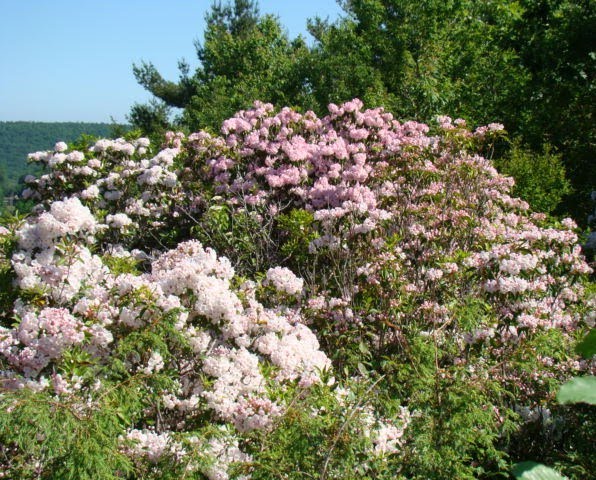
General Information
Eastern Hemlock is an evergreen conifer with upsweeping branches and shallow, wide-spreading roots. It reaches ages of 800 years and older. At the end of the 19th Century and beginning of the 20th Century, Eastern Hemlock was valued for its bark which was used as a source of tannin for the leather industry. Due to its brittle nature, Eastern Hemlock is not important to the timber industry today.
Dense stands of Eastern Hemlock provide valuable wildlife habitat. They can be climbed by small black bear cubs and, consequently, black bear mothers spend most of their time in early spring within close reach of these trees in parts of Minnesota. In the southern Appalachian Mountains, forests of hemlock provide nesting sites for many bird species. The seeds are eaten by mammals and birds and in winter the foliage provides browsing for moose, white-tailed deer, and snowshoe hares.
In cultivation, Eastern Hemlock is planted as an ornamental. As a group planting, it serves as important shelter and cover for deer and other wildlife (e.g., ruffled grouse and turkey). It makes a graceful hedge and provides excellent screening.
The native range of Eastern Hemlock extends across Ontario to Cape Breton, Nova Scotia. It continues south throughout New England, the mid-Atlantic states, to Northern Georgia and Alabama in the Appalachian Mountains and west to Missouri, Wisconsin and Minnesota. It’s also found in Michigan, Indiana, Ohio, New York and Pennsylvania.
Plant Habit and Form
Considered to be one of the most beautiful conifers, Eastern Hemlock is pyramidal with a broadly conic crown and grows to be 60 to 70 feet tall. The branches are often drooping at the ends and the foliage appears fine and feathery, giving the tree its graceful form. It is considered to be medium-growing. The leaves -- flat needles between .3 to .7 inches long -- are light green in spring with new growth, changing to dark glossy green as they age. The bark changes from smooth, to flaky and scaly, and finally matures to furrowed wide flat ridges.
Growing Requirements
Eastern Hemlock is hardy in zones 3b to 7(8). It is very shade tolerant and seedlings can survive in as little as 5 percent of full light and establish themselves under mature maple canopies, eventually replacing the species in some cases. In the southern and western limits of its range, Eastern Hemlock is confined to moist, cool growing sites (e.g., valleys, northern and eastern slopes). It tolerates warmer and dryer conditions in northern areas of its range. Overall, Eastern Hemlock prefers moist, well-drained soil. It has been reported to be the most lime tolerant in the genus. Due to its shallow root system, it is susceptible to wind-throw when exposed by timber cutting or planted in open areas.
Flowering and Fruiting
Eastern Hemlock is monoecious, with male and female flowers. Flowers are inconspicuous and the fruits (small cones) are about .5 to 1.0 inch long. Large crops of cones are frequent and occur about every 3 to 4 years. Seed is dispersed by gravity and wind.
Pests and Diseases
Eastern Hemlock is not particularly tolerant of pollution, heat, and drought. The most damaging insect pest for this species is the wooly adelgid which can destroy large trees in 3 years if left unchecked. Other pests include spider mites, bagworm, and gypsy moth.
ID Tips
Pyramidal in shape with graceful horizontal to pendulous branches, short flattened needles, and small cones about .5 to 1.0 inch long.

